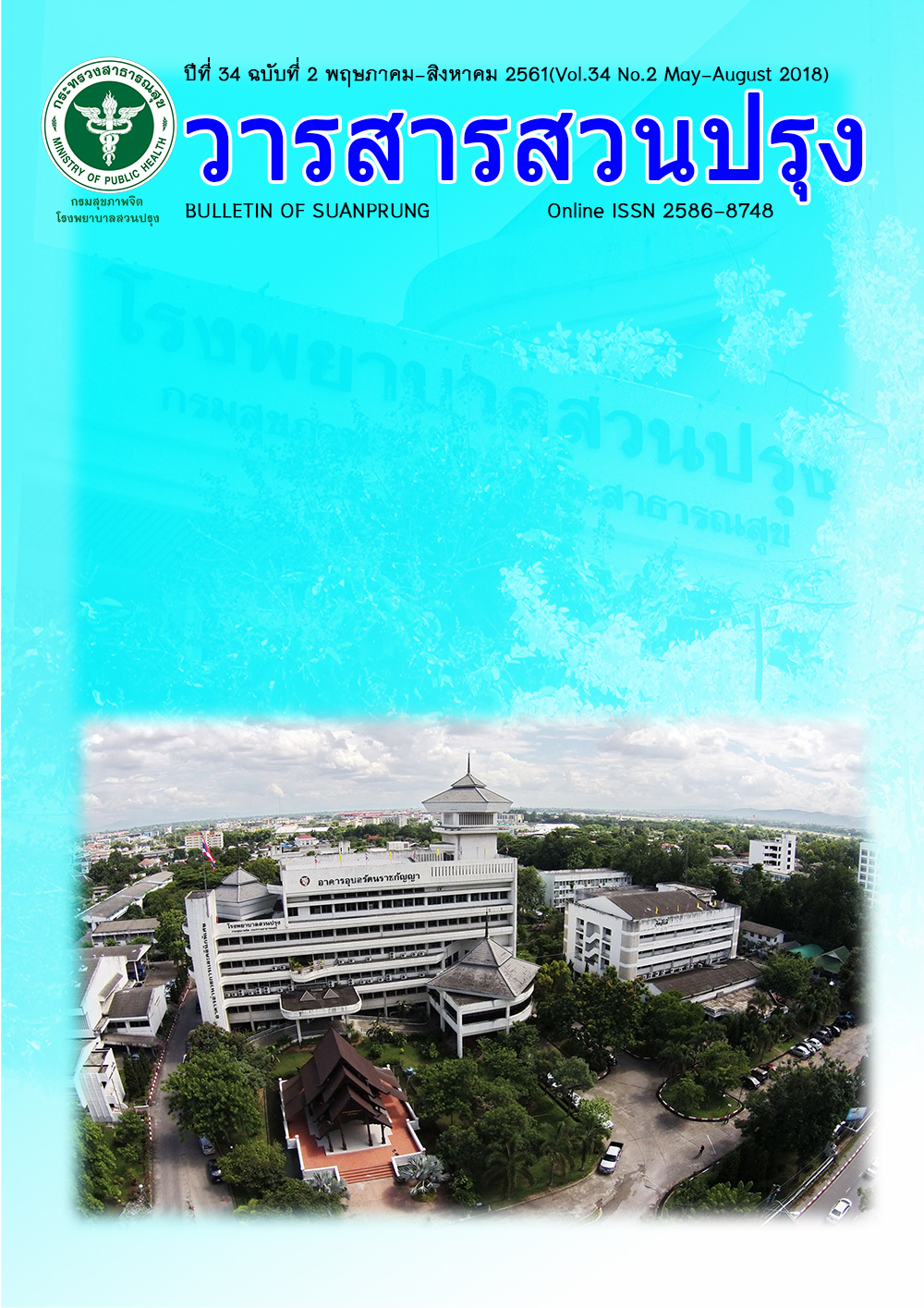Effectiveness of Handwriting Intervention Protocol for Students with Attention - Deficit/Hyperactivity Disorder and Handwriting Difficulties
Main Article Content
Abstract
Abstract
Objective: The aim of this research was to examine the effectiveness of Handwriting Intervention Protocol for first grade students with attention - deficit/hyperactivity disorder and handwriting difficulties.
Materials and methods: The study was conducted with an experimental design, single group pre-test and post-test comparison. The participants were five first graders with attention – deficit/hyperactivity disorder and handwriting difficulties. All participants received the Handwriting Intervention Protocol twice-a-week for 10 consecutive weeks, with each session lasting 45 minutes. The outcome measures for assessing handwriting abilities were the Thai Alphabet Handwriting Assessment, Handwriting Speed Test, and the Beery™ VMI, 6th Edition. Data were analyzed by using descriptive statistics and the Wilcoxon Signed Ranks Test.
Results: After receiving the Handwriting Intervention Protocol, participants had significant improvement in handwriting performance scores, including letter formation, alignment, size, straightness and overall scores (p < .05). Handwriting speed scores as well as visual-motor integration and motor coordination scores were also significantly improved after receiving the Handwriting Intervention Protocol (p < .05).
Conclusion: This study provides preliminary support for the Handwriting Intervention Protocol to improve handwriting performance in first grade students with attention - deficit/ hyperactivity disorder.
Keywords: ADHD, Handwriting difficulties, Handwriting intervention protocol
ประสิทธิผลของแนวทางบำบัดการเขียนสำหรับเด็กสมาธิสั้นที่มีความบกพร่องด้านการเขียน
บทคัดย่อ
วัตถุประสงค์ : เพื่อศึกษาประสิทธิผลของแนวทางบำบัดการเขียน
วัสดุและวิธีการ : เป็นการศึกษาเชิงทดลอง 1 กลุ่ม เปรียบเทียบผลก่อนการบำบัดและ หลังการบำบัดตามแนวทางบำบัดการเขียนในเด็กสมาธิสั้นที่มีความบกพร่องด้านการเขียน ชั้นประถมศึกษาปีที่ 1 จำนวน 5 คน ซึ่งได้รับการบำบัดการเขียนครั้งละ 45 นาที 2 ครั้งต่อสัปดาห์ นาน 10 สัปดาห์ ในช่วงเดือนพฤษภาคม-สิงหาคม 2559 โดยใช้แบบประเมินความสามารถการเขียนพยัญชนะไทย แบบวัดความเร็วของการเขียนและแบบประเมิน Beery™ VMI, 6th Edition วิเคราะห์ข้อมูลด้วยสถิติเชิงพรรณนาและ Wilcoxon Signed-Ranks Test
ผลการศึกษา : กลุ่มตัวอย่างมีคะแนนความสามารถด้านการเขียนหลังการบำบัดมากกว่าคะแนนก่อนการบำบัดอย่างมีนัยสำคัญทางสถิติที่ระดับ 0.05 ทั้งคะแนนโดยรวมและคะแนนรายด้าน ได้แก่ รูปร่างของตัวพยัญชนะ การเขียนในแนวเส้นบรรทัด ขนาด และความตรง ส่วนความเร็วของ การเขียน พบว่า กลุ่มตัวอย่างมีความสามารถในการเขียนหลังการบำบัดเร็วกว่าก่อนการบำบัดอย่างมีนัยสำคัญทางสถิติ และคะแนนความสามารถด้านการบูรณาการทักษะการมองเห็นและการเคลื่อนไหวและความสามารถด้านสหสัมพันธ์การเคลื่อนไหวหลังการบำบัดมากกว่าคะแนนก่อนการบำบัด อย่างมีนัยสำคัญทางสถิติ
สรุป : แนวทางบำบัดการเขียนของการศึกษาวิจัยนี้สามารถช่วยพัฒนาความสามารถ ด้านการเขียนในเด็กสมาธิสั้นที่มีความบกพร่องด้านการเขียนระดับชั้นประถมศึกษาปีที่ 1 ได้
คำสำคัญ : โรคสมาธิสั้น ความบกพร่องด้านการเขียน แนวทางบำบัดการเขียน
Article Details
บทความหลังผ่านการปรับแก้จากกองบรรณาธิการแล้ว เป็นลิขสิทธ์ของวารสารจิตเวชวิทยาสาร โรงพยาบาลสวนปรุง กรมสุขภาพจิต กระทรวงสาธารณสุข ห้ามเผยแพร่เพื่อประโยชน์ทางการค้าโดยไม่ได้รับอนุญาต แต่อนุญาตให้เผยแพร่บทความดังกล่าวเพื่อประโยชน์ทางการศึกษาแก่ประชาชนทั่วไป ทั้งนี้กองบรรณาธิการไม่จำเป็นต้องเห็นด้วยกับบทความหรือข้อคิดเห็นใดๆ ที่ปรากฏในวารสารสวนปรุง

